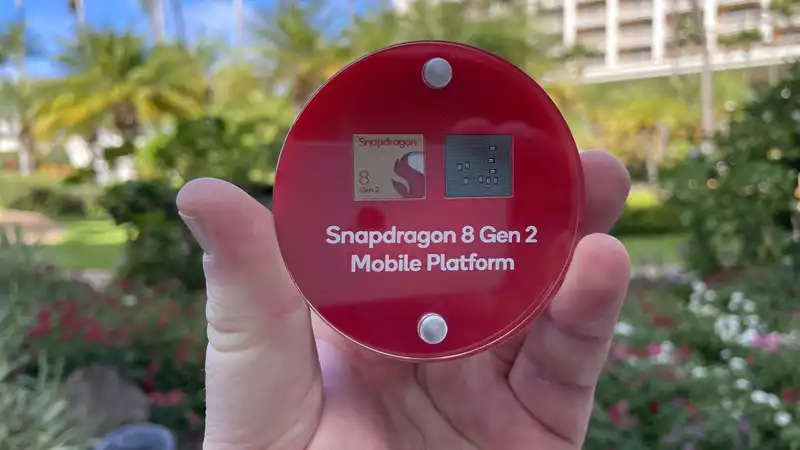Like it or not, SIM cards have an expiration date. Not only has the iPhone 14 forsaken physical SIM cards in the U.S., but more and more flagships have been supporting eSIM for some time. Now, Qualcomm's new integrated SIM (iSIM) technology is about to put another nail in the SIM card coffin.
Qualcomm announced the move at MWC 2023 in Barcelona with the news that the "world's first commercially deployable iSIM" has been certified for use in the Snapdragon 8 Gen 2 platform. In essence, it is another way for device manufacturers to offer cellular network connectivity without the burden of physical SIM cards.
Integration into the Snapdragon 8 Gen 2 chipset means that the SIM card functionality is essentially carried by the processor. This means that there is no need for a SIM card tray or space for a standalone eSIM. Besides, iSIM is said to "consume significantly less power" than eSIM.
Qualcomm claims that this space savings will result in more compact and cost-effective handsets, as well as reduced costs associated with the supply chain and manufacturing. Apparently, the technology will have this effect in smartphones, tablets, and wearables.
Furthermore, chip makers state that iSIM will "complement" existing SIM card and eSIM technology. In other words, it will allow cell phones to support iSIM without sacrificing SIM card or eSIM availability.
According to Qualcomm, iSIM, like eSIM, is fully compliant with the GSMA Remote SIM Provisioning standard, allowing contracts to be managed remotely through "any standard platform. iSIM, like eSIM, is fully compliant with the GSMA Remote SIM Provisioning iSIM, like eSIM, is fully compliant with the GSMA Remote SIM Provisioning standard, allowing contracts to be managed remotely through "any standard platform".
While it is not certain when the first iSIM-enabled smartphone will appear, the fact that it can be deployed on the Snapdragon 8 Gen 2 platform suggests it will not be long. After all, the chip is already used in the best Android phones. As for mass adoption, Kaleido Intelligence reports that iSIM shipments could reach 300 million units by 2027.
Of course, handset manufacturers may have to work to get people to switch to iSIM and to get local carriers to actually support iSIM over more established alternatives. switching to iSIM will probably not make much difference to the everyday user will not make a difference, but the behind-the-scenes benefits mean that this is an important thing to do.










Comments